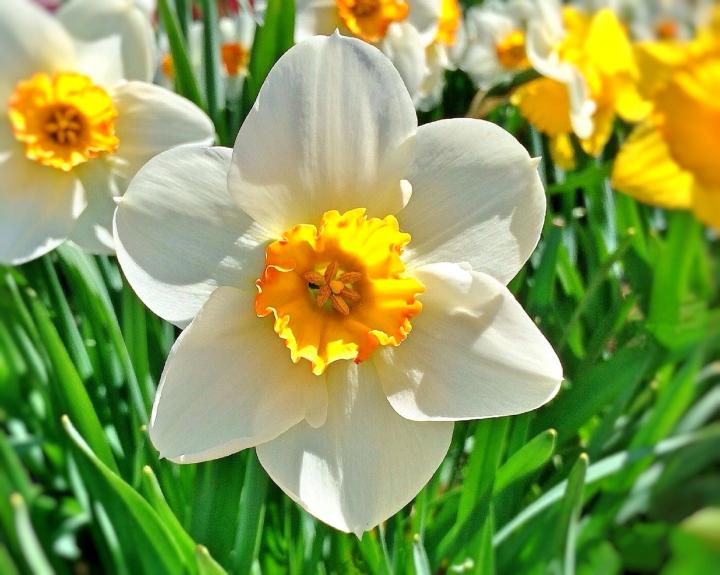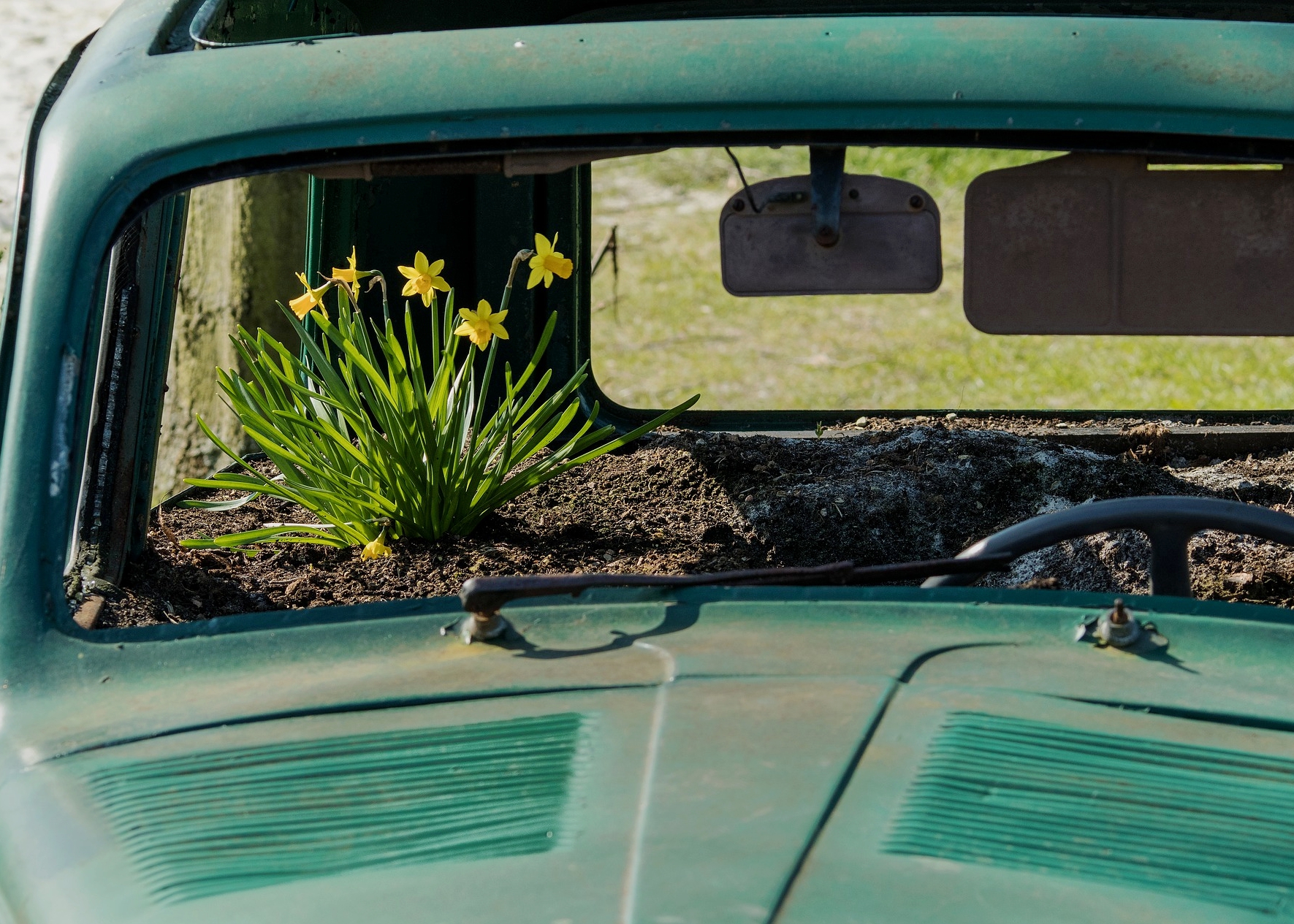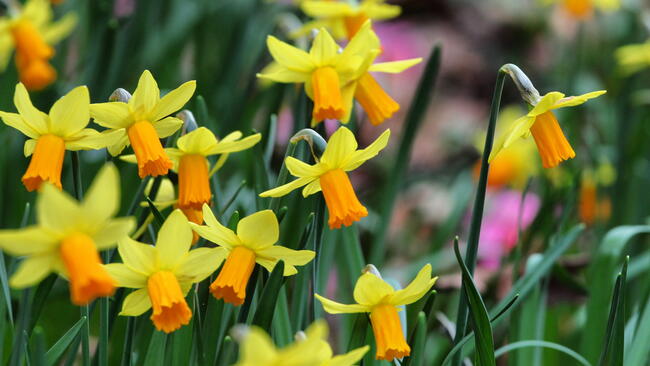In gardens and woodland areas, daffodils are readying themselves for their early spring appearance. So, it’s no surprise that the daffodil is linked to those born in March. Whether it’s your “birth” flower or not, learn more about the history, meaning, and symbolism of the daffodil!
Advertisement
The Daffodil
The traditional daffodil is either yellow, white or a combination of the two, but newer varieties now include pink and orange. The classic daffodil flower is made up of six petals and a trumpet- or bell-shaped crown that is frilled at its edge.
Native to northern Europe, daffodils can be grown in most of North America, except in the hottest and wettest areas.
Daffodils are best known for a single bloom on each stem, but others in the daffodil family, like the jonquil, will produce multiple blooms per stem. There are thousands of registered cultivars of daffodils!
Daffodils also go by their Latin name, Narcissus, which is the plant’s genus. Interestingly, the term “daffodil” doesn’t refer to a singular species; many flowers in the Narcissus genus go by the name. Jonquils, for example, are included within Narcissus and are sometimes called rush daffodils. So, a good thing to remember: all jonquils are daffodils, but not all daffodils are jonquils!
It’s believed that the daffodils are named after Narcissus, the son of Cephissus, who was the river god in Greek mythology. According to legend, Narcissus fell in love with his own reflection in the water and when he died starring at himself, the daffodil bloomed where he died.
Daffodil Meanings and Symbolism
- Because it is one of the first flowers to bloom in spring, daffodils are seen as a representation of rebirth and new beginnings. They are also thought to represent inspiration, forgiveness, and creativity.
- In Wales, legend says that those who see the first daffodil of the season will be blessed with wealth in the coming year.
- In China, if a daffodil blooms on the first day of a new year, it is thought to bring wealth and good fortune for the rest of the year.
- During Medieval times, it was thought that if a daffodil drooped as you looked at it, it was an omen of death.
- According to legend, in France the daffodil was viewed as a sign of hope.
- In the Middle East, it was thought to be an aphrodisiac and a cure for baldness.
- The gift of a single daffodil is thought to bring about misfortune, so it’s better to give a bunch.
- The daffodil is traditionally given to celebrate a 10th wedding anniversary.

Daffodils in History
- Daffodils are the national flower of Wales and are worn for St. David’s Day each year on March 1.
- In ancient Rome, the bulbs and roots of the daffodil were applied to treat tumors, while in other locations is has been used to treat painful joints, wounds, burns, and bruises.
- A bioresearch company in Wales uses galantamine, a compound found in daffodils, to create drugs used to slow the progression of Alzheimer’s.
- Daffodils have been featured in several literary works by William Shakespeare and William Wordsworth.

Daffodils in the Garden
This perennial is hardy, easy to grow, and returns year after year. Planted in the fall—before the first frost—daffodils are one of the first flowers to bloom in the spring. To bloom in the spring, the bulbs need to experience a period of cold temperatures to promote root development, which is why they don’t grow well in hot climates.
After the flowers bloom and die in the spring, remove the faded flowers, but let the foliage remain to help rebuild the bulb for the following year. Once the leaves have turned yellow, you can cut them back, too.
→ To learn more about growing daffodils, visit our Daffodils Growing Guide.
Certainly, one of the first flowers of spring brings us new beginnings and, as the poet John Keats said, “joy for ever.” With their bright yellow petals, daffodils seem the perfect way to say that the sun is always shining whenever your loved one is around.
Learn More












Comments